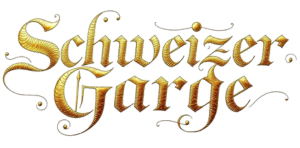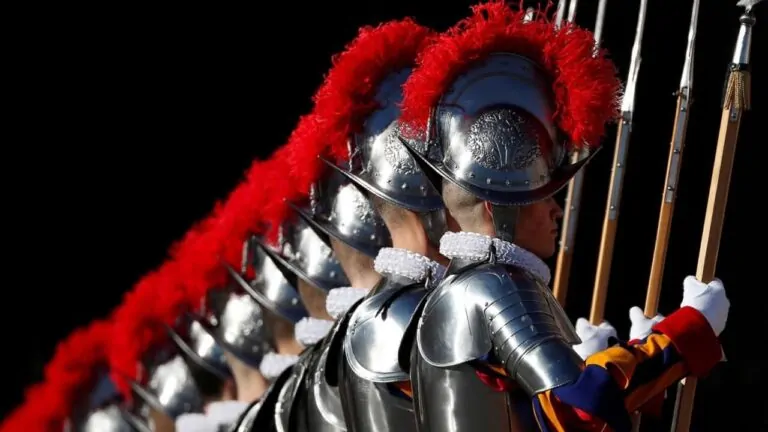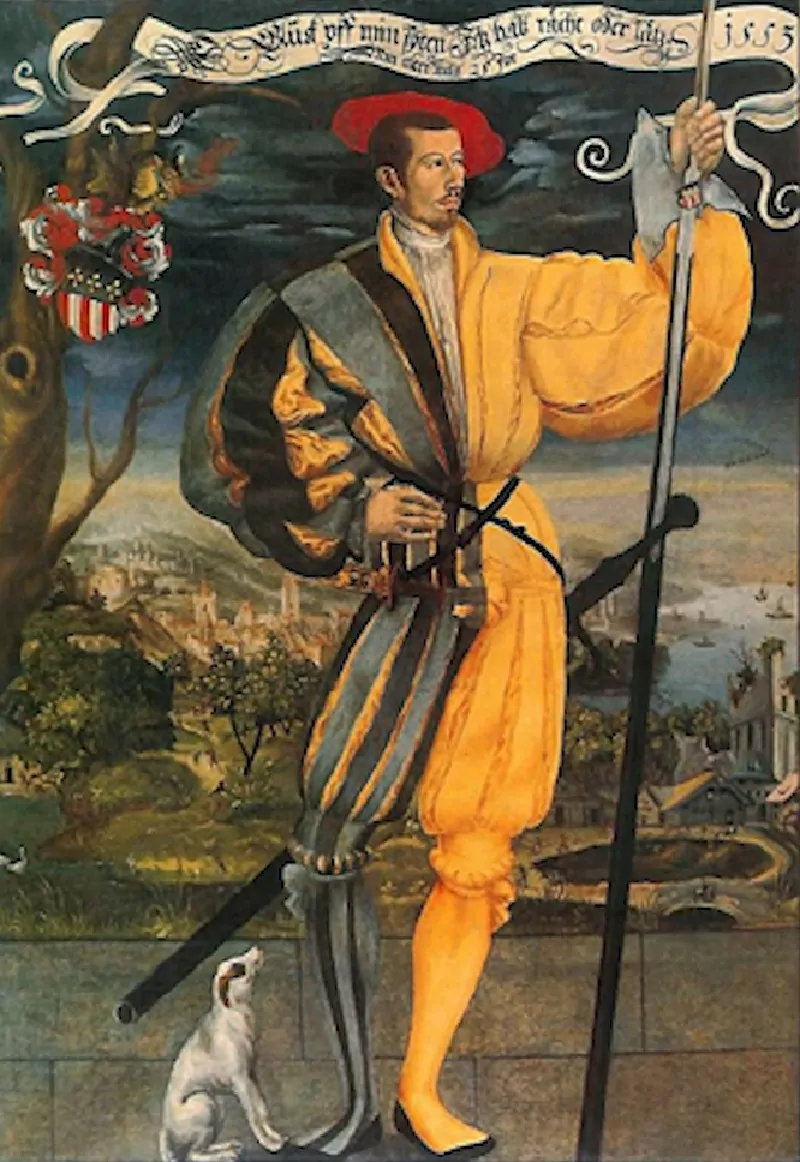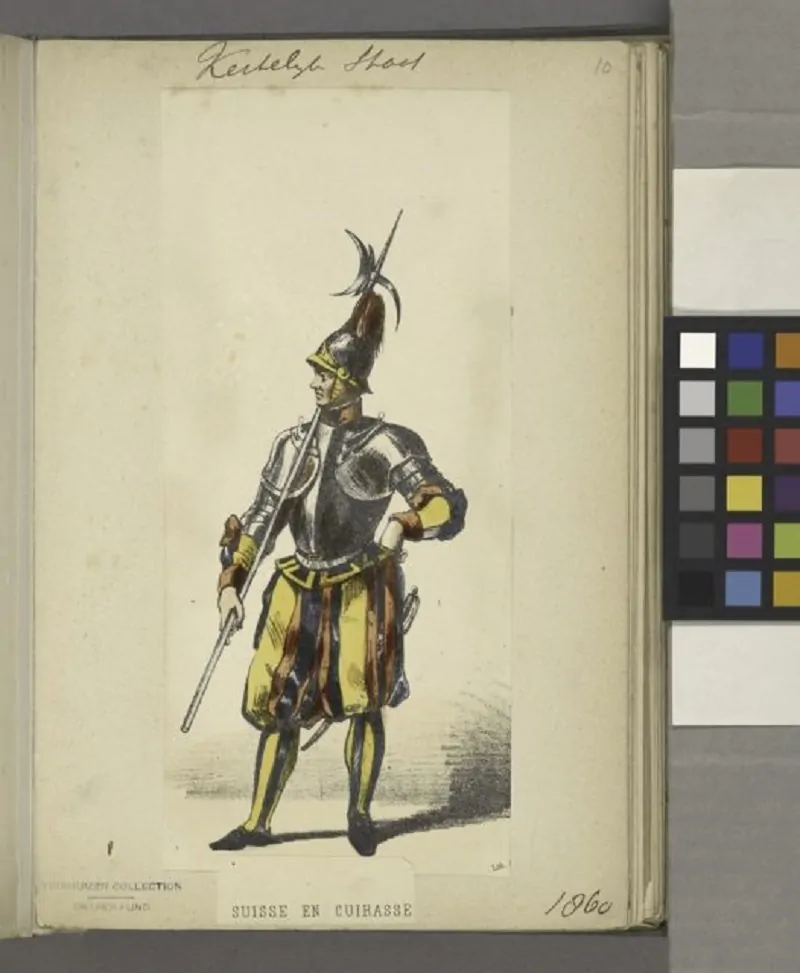The Pontifical Swiss Guard stands as one of the most recognizable military forces in the world. Known for their ceremonial halberds and Renaissance-style attire, these guards carry centuries of visual identity and purpose through their uniforms.
Their style, though rooted in historical designs, has evolved across five centuries with a blend of tradition, reform, and Vatican authority. Every element, from fabric to color, carries symbolic and practical meaning.
This timeline outlines how Swiss Guard uniforms changed over 500 years, including lesser-known variants and modern adaptations.
Five Centuries in Uniform
| 1506–1600 | Swiss mercenary dress | Chainmail, tabards, personal armor |
| 1600–1700 | Unified colors begin | Red, yellow, blue introduced |
| 1700–1800 | Simplified shapes | Leather belts, wider sleeves |
| 1800–1900 | Revival designs | High collars, embroidery |
| 1914–1945 | Repond era uniform | Tri-color standard, handmade |
| 1945–2000 | Ceremonial focus | Lightweight boots, global attention |
| 2000–Present | Utility options, 3D helmets | Duty uniform and Gala coexist |
Origins in 1506: The First Uniforms in Papal Rome
Pope Julius II founded the Swiss Guard on January 22, 1506. The newly appointed guards arrived in Rome wearing attire standard for Swiss mercenaries of the time. There was no official uniform at first. Each soldier brought his own armor, regional fabrics, and colors. Styles varied by canton and reflected early 16th-century military trends.
Early Armor and Weaponry
- Chainmail tunics with tabards were common.
- Leather chest plates offered some protection without sacrificing movement.
- Metal helmets, often open-faced, were worn for duty.
- Each guard carried a halberd and a short sword or dagger.
The Vatican sought reliable, loyal troops during a time when papal rule in central Italy faced constant threats. Clothing reflected military functionality, not pageantry.
1527: The Sack of Rome and Symbolic Preservation
During the 1527 Sack of Rome by imperial troops under Charles V, 147 of 189 guards died protecting Pope Clement VII. At the time, guards wore practical battle dress, likely stripped of heavy armor for mobility. Cloth doublets, metal helmets, and leather shoes marked their appearance.
After 1527, the Swiss Guard gained mythic status. Their clothing became a reflection of sacrifice and loyalty. Surviving references to their attire became templates for later reinterpretations. The Vatican began to institutionalize certain colors and formats for the corps.
17th Century: Color Unification and Visual Authority
By the 1600s, the Swiss Guard began wearing uniforms with more unified colors. Vatican records confirm consistent use of red, yellow, and blue. The origin of these colors is often linked to the Medici family, especially Pope Leo X, who came from that lineage.
- Red represented the Catholic Church and martyrdom.
- Yellow and blue symbolized papal sovereignty.
Increased Ceremonial Use
During this period, the Swiss Guard served not only as protectors but also as ceremonial figures. Uniforms became more decorated. Sleeves widened. Tunics extended below the waist. Leather gloves and decorative cuffs were added for formal occasions.
18th Century: Modest Changes, Consistent Themes
Most guards rotated between formal and day uniforms. For regular duty:
- Simple tunics with vertical stripes became standard.
- Loose-fitting trousers allowed movement.
Ceremonial garb retained the Renaissance look but with lighter materials. Silk began to replace heavy wool in some formal elements.
Helmet Evolution
Morion helmets became more popular. These had open faces and crests, suitable for marching and crowd presence. Some helmets were adorned with plumes, usually ostrich feathers, dyed in red for officers.
19th Century: French Occupation and Revival
During the Napoleonic era, papal authority faced decline. The French dissolved the Swiss Guard for a time, but they returned after the Congress of Vienna in 1815. The re-establishment marked a revival in uniform pride.
1825 Design Milestone
Uniforms adopted in the mid-1800s began to resemble the current style. Doublets with puffed sleeves and breeches with vertical stripes dominated the look. Embroidery and high collars entered the ceremonial version.
- White ruff collars became symbols of dignity.
- Metal breastplates were reserved for officers.
The look shifted toward pageantry while still rooted in defense and security.
1914: Jules Repond’s Major Uniform Reform
Jules Repond, a former Swiss Army officer and commandant of the Swiss Guard, introduced the most iconic and enduring redesign in 1914. His vision redefined the uniform by anchoring it directly in Renaissance visual culture.
Inspiration from Renaissance Paintings
Repond studied Raphael’s frescoes in the Vatican, especially The Mass at Bolsena. Guards in these artworks wore outfits with puffed sleeves, flared pants, and blocky stripes. Repond translated those elements into practical, wearable attire.
Key features introduced:
- Tri-color patterns in blue, red, and yellow
- Ballooned sleeves and trousers
- Button-down doublets with rows of fasteners
- Handmade tailoring
Standardization of Uniform Production
Each uniform required over 30 hours of manual labor. Tailors based in Vatican workshops cut and stitched each set based on the wearer’s measurements. Wool and cotton were used. Linen undergarments helped maintain comfort.
Repond’s reform also reintroduced discipline and hierarchy to the corps. Visual uniformity became a tool for morale and public recognition.
Post-World War II: Functional Adjustments
After 1945, minor adjustments followed to keep pace with modern requirements. Guards began wearing more comfortable footwear. Black leather boots replaced outdated models. Uniform materials became lighter and more breathable.
Discreet Armor Integration
Officers retained cuirass breastplates during high ceremonies. Some had the Medici crest engraved in silver or brass. Underneath the color, some fabrics were reinforced for limited ballistic protection during events.
1970s–1990s: Media Spotlight and Prestige
Global Recognition
During the papacy of John Paul II, the Swiss Guard received renewed attention. High-profile events, international visits, and televised ceremonies placed the uniforms in front of millions. The Vatican doubled down on visual identity.
Public Perception
The uniform came to symbolize elegance, honor, and religious loyalty. Tourists often mistook the look for theater costumes. Guards clarified that the design was historic and rooted in real battlefield attire.
2002: Introduction of the Simple Blue Uniform
The Vatican introduced a blue utility uniform in 2002. Designed for daily use, it helped guards work in the heat or conduct administrative tasks without wearing full ceremonial gear.
Features of the blue uniform:
- Navy blue polyester blend
- Flat beret or soft cap
- Lightweight boots
2010s–Present: Digital Innovation and Preservation
In 2019, the Swiss Guard began wearing helmets produced by 3D printing. The new version, made of polyamide plastic, replaced the traditional metal morion helmet.
Advantages:
- Lighter weight
- UV-resistant
- Ventilated interior
- Faster production process
The Vatican now keeps both traditional and modern helmets in rotation, depending on the event.
Continued Handmade Craftsmanship
Despite technological updates, tailors in the Vatican still handcraft the ceremonial uniforms. Every new guard is measured and fitted. Uniforms are stored and reused but always customized for each individual.
Current Uniform Types
| Uniform Type | Use | Features |
|---|---|---|
| Gala Uniform | Ceremonial duties, religious events, papal audiences | Tri-color design (blue, red, yellow), puffed sleeves, balloon trousers, white collar and gloves, sword belt, ostrich plume helmet for officers |
| Duty Uniform | Daily security tasks at Vatican gates | Blue and yellow striped pattern, simpler cut, black beret, wool fabric |
| Utility Uniform | Casual or non-public tasks | Solid navy blue, no decorations, lightweight and breathable, soft cap |
| Officer Uniform | Leadership roles during major events | Similar to Gala, includes black or polished cuirass (breastplate), red plume, detailed cuffs and collars, ceremonial sword |
Uniform Symbolism
- Blue connects to the House of Della Rovere, related to Pope Julius II.
- Red honors the Church and its martyrs.
- Yellow links to papal authority and the Medici family.
Design Logic
Puffed sleeves and balloon pants allow airflow. Heavy fabrics discourage wrinkling. Long vertical stripes elongate the figure, reflecting strength and stature. Gloves and boots reflect formality and cleanliness.
Each accessory adds rank or context to the uniform. White gloves denote ceremonial posture. Helmets separate standard guards from commanding officers.
Craftsmanship Behind Every Uniform
Each uniform is made in the Vatican by a dedicated team. Only a small number of tailors receive access to the designs and techniques. Patterns are preserved in archives and changed only under direct papal approval.
- One uniform takes about 32 hours to complete.
- No machine templates are used.
- Buttons and fasteners are hand-stitched.
- All measurements are precise to a half-centimeter.
Conclusion
Swiss Guards wear one of the most iconic military uniforms ever created. Over five centuries, their attire transformed from battlefield gear into ceremonial regalia with deep meaning and national pride. Tailors in Vatican City maintain the tradition with precision. Colors echo papal history. Styles reflect Renaissance elegance.
Even as modern changes enter the process, the uniform still serves its original purpose: honor, duty, and protection of the pontiff.




